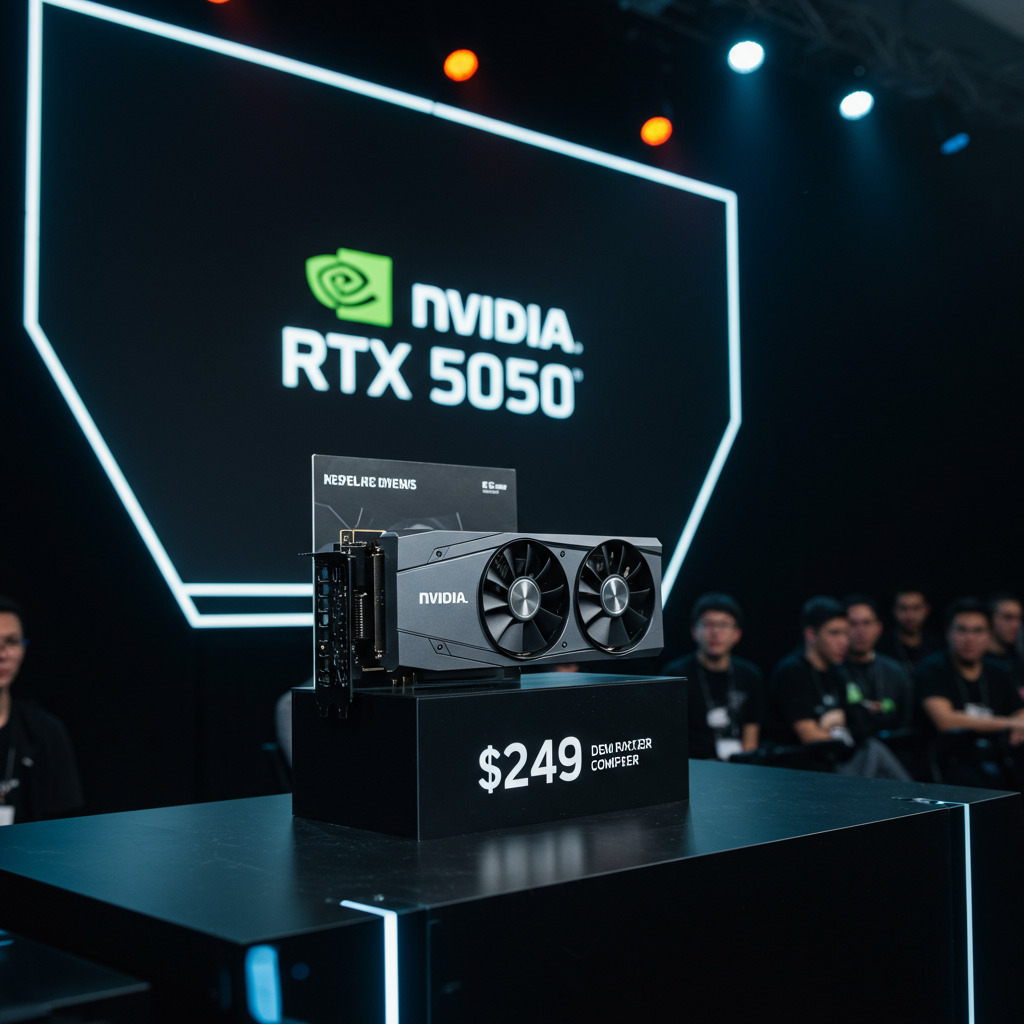Nvidia is expanding its next-generation graphics card lineup with the official announcement of the GeForce RTX 5050. Positioned as the most accessible entry in the new RTX 50-series, this GPU is set to launch with a starting price of just $249. Gamers and creators looking for a compelling mix of performance and value won’t have long to wait, as the RTX 5050 is slated for release in the second half of July 2025.
Built on Nvidia’s cutting-edge Blackwell architecture, the RTX 5050 utilizes the new GB207 die. It features 2560 CUDA cores, which represents two-thirds the core count found in the previously launched RTX 5060. Like its higher-end siblings in the 50-series, the card comes equipped with 5th generation Tensor cores and 4th generation RT cores. This hardware foundation enables support for advanced technologies including DLSS 4 with multi-frame generation and the forthcoming Reflex 2 technology, aiming to deliver enhanced performance and responsiveness in compatible titles.
Clock speeds for the RTX 5050 GPU are listed at a 2.31GHz base, boosting up to 2.57GHz. The card features 8GB of GDDR6 memory on a 128-bit memory interface. Notably, based on current announcements, the RTX 5050 is the only card in the initial 50-series lineup to utilize GDDR6 memory rather than the newer GDDR7.
Connectivity options include three DisplayPort 2.1b ports and one HDMI 2.1b port, providing ample display flexibility. For content creators and streamers, the card incorporates a 9th generation NVENC encoder and a 6th generation NVDEC decoder, accelerating video processing tasks.
The RTX 5050 has a Thermal Design Power (TDP) of 130W. Power delivery is handled by either a single 8-pin power connector or a PCIe Gen 5 cable rated for 300W or greater.
Performance Expectations
While detailed independent benchmarks are yet to emerge, Nvidia has provided some performance indicators for the RTX 5050. The company claims the new card is, on average, 60% faster in traditional rasterization tasks compared to the GeForce RTX 3050, a GPU that launched over three years ago. Performance is also suggested to be, on average, “in the ballpark” of the RTX 4060, which was released two years prior. These claims position the RTX 5050 as a significant generational leap for entry-level performance.
Availability
Potential buyers can expect the GeForce RTX 5050 to be readily available on shelves starting in the second half of July 2025. Unlike some previous launches, Nvidia will not be producing a Founders Edition model for the RTX 5050. Instead, the card will be exclusively available through Nvidia’s extensive network of major board partners, including manufacturers like ASUS, GIGABYTE, MSI, ZOTAC, and others.
In addition to the desktop variant, Nvidia also announced a mobile version of the RTX 5050. Laptops featuring this mobile GPU are already shipping, with starting prices around $999.
Market Impact and Accessibility
The launch of the RTX 5050 at a $249 price point is seen as a strategic move by Nvidia to significantly enhance accessibility to high-performance gaming technology. By leveraging the new Blackwell architecture and offering features like DLSS 4 at this price, the card aims to effectively bridge the gap between affordability and performance for a wider global audience. This competitive pricing and feature set is expected to potentially redefine the entry-level segment of the graphics card market, potentially encouraging innovation and response from competing companies as well. The release through numerous board partners also suggests a strong push for broad distribution upon launch.
The NVIDIA GeForce RTX 5050 appears poised to deliver a compelling upgrade path for users on older generation hardware or those looking to enter the world of RTX gaming without breaking the bank, offering modern features and a substantial performance uplift relative to its predecessors.
References
- <a href="https://www.gsmarena.com/nvidiaannouncesgeforcertx5050for249-news-68383.php”>www.gsmarena.com
- news.faharas.net




